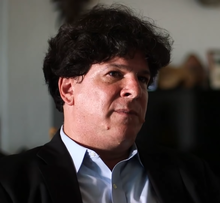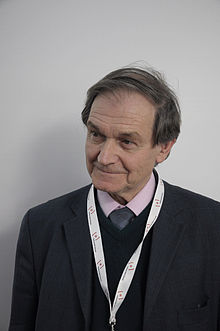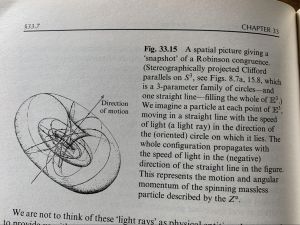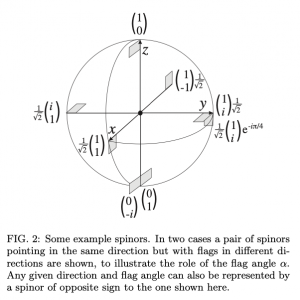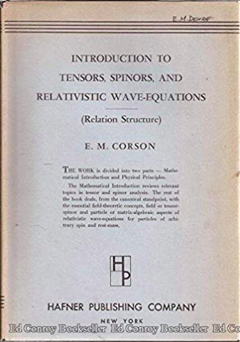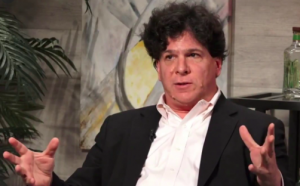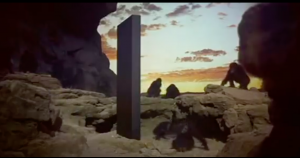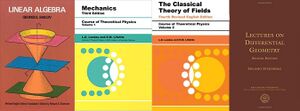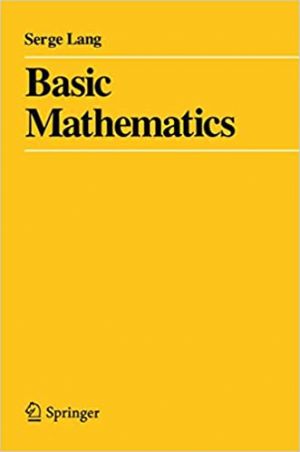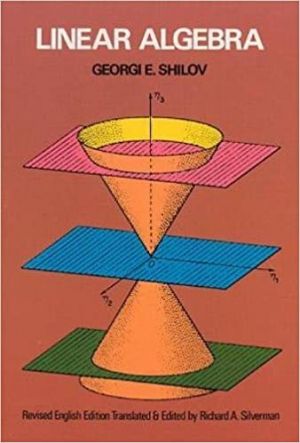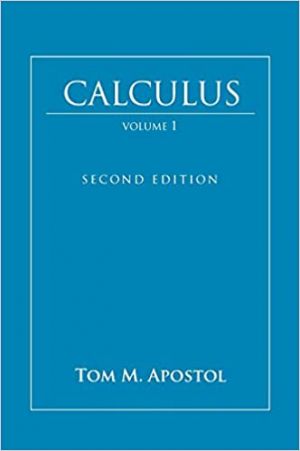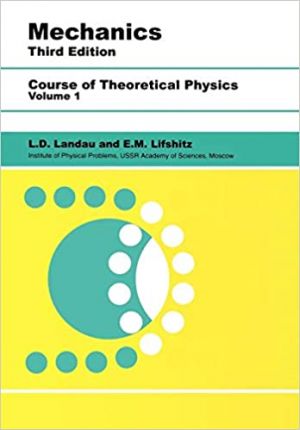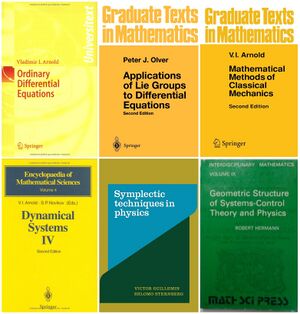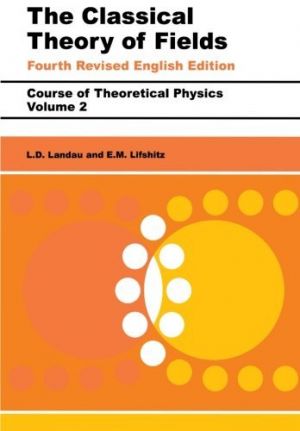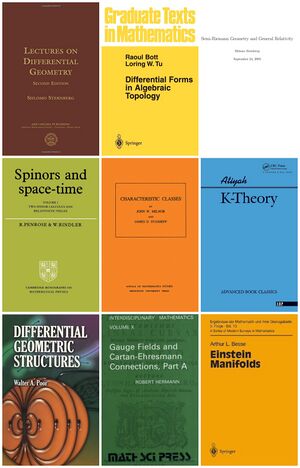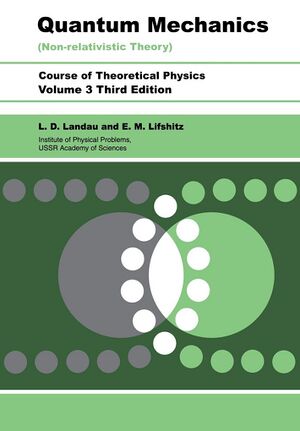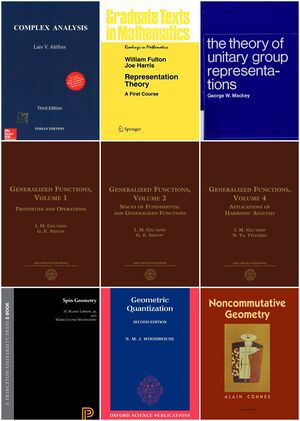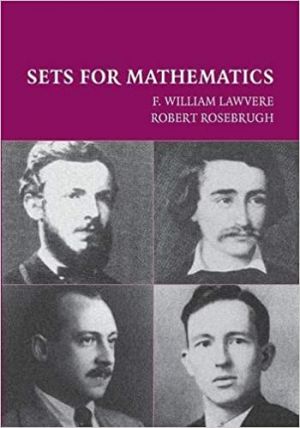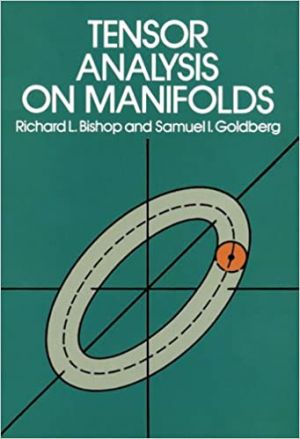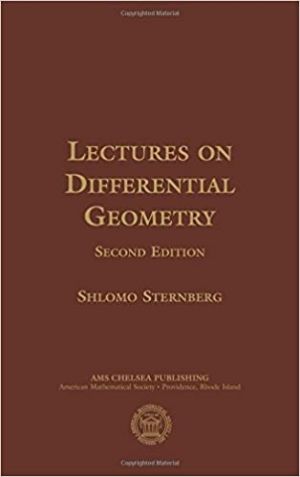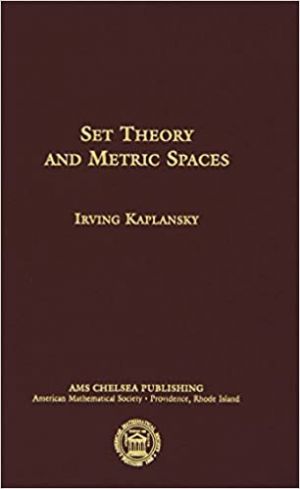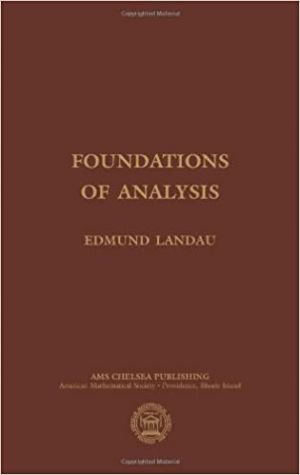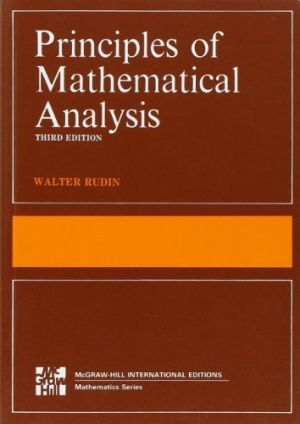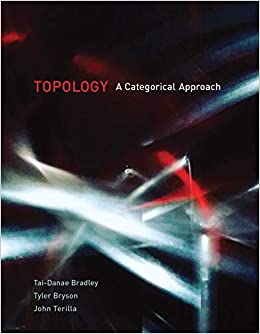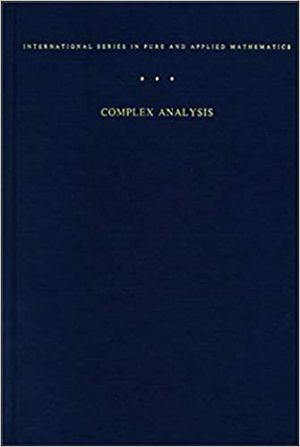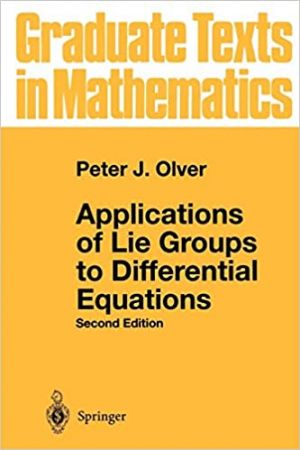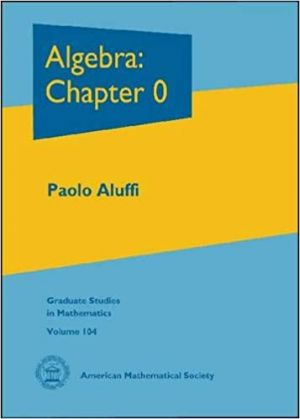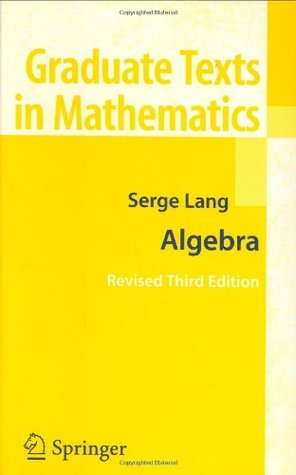User:Anisomorphism: Difference between revisions
No edit summary |
|||
| Line 1: | Line 1: | ||
I do math | I do math | ||
= episode 20 experimental markup dump = | |||
== Experimental Markup for player == | |||
<div data-type="note" data-timestamp="0:00:01"> | |||
Eric Weinstein interviews Sir Roger Penrose, Episode 20 of The Portal | |||
</div> | |||
<div data-type="note" data-timestamp="0:00:01"> | |||
Player by Demp | |||
Annotations by R1chard5mith | |||
</div> | |||
<div data-type="resource" data-timestamp="0:00:01"> | |||
[[File:Eric weinstein.png|thumb]] | |||
</div> | |||
<div data-type="resource" data-timestamp="0:00:02"> | |||
[[File:Roger penrose.jpg|thumb]] | |||
</div> | |||
<div data-type="resource" data-timestamp="0:11:05"> | |||
https://upload.wikimedia.org/wikipedia/en/thumb/f/f9/Sciama2.jpg/200px-Sciama2.jpg | |||
[https://en.wikipedia.org/wiki/Dennis_W._Sciama Dennis Sciama] | |||
</div> | |||
<div data-type="resource" data-timestamp="0:11:10"> | |||
https://static.scientificamerican.com/blogs/cache/file/7DAF801B-9AED-4B63-B7EAD43F5E9B1B2D_source.jpg | |||
</div> | |||
<div data-type="note" data-timestamp="0:11:17"> | |||
[https://en.wikipedia.org/wiki/Physics Physics] | |||
</div> | |||
<div data-type="resource" data-timestamp="0:11:31"> | |||
https://upload.wikimedia.org/wikipedia/commons/thumb/e/eb/Stephen_Hawking.StarChild.jpg/220px-Stephen_Hawking.StarChild.jpg | |||
</div> | |||
<div data-type="note" data-timestamp="0:11:31"> | |||
[https://en.wikipedia.org/wiki/Stephen_Hawking Stephen Hawking] | |||
</div> | |||
<div data-type="resource" data-timestamp="0:11:40"> | |||
https://upload.wikimedia.org/wikipedia/commons/thumb/5/50/Paul_Dirac%2C_1933.jpg/220px-Paul_Dirac%2C_1933.jpg | |||
</div> | |||
<div data-type="note" data-timestamp="0:11:40"> | |||
[https://en.wikipedia.org/wiki/Paul_Dirac Paul Dirac] | |||
</div> | |||
<div data-type="note" data-timestamp="0:11:50"> | |||
Book: [https://www.amazon.com/Strangest-Man-Hidden-Dirac-Mystic/dp/0465022103 The Strangest Man: The Hidden Life of Paul Dirac, Mystic of the Atom] by [https://en.wikipedia.org/wiki/Graham_Farmelo Graham Farmelo] | |||
</div> | |||
<div data-type="note" data-timestamp="0:12:22"> | |||
[https://en.wikipedia.org/wiki/Albert_Einstein Albert Einstein] | |||
<div> | |||
<div data-type="note" data-timestamp="0:12:35"> | |||
Eric imputes that Dirac’s hair was not as good as Einstein’s. | |||
</div> | |||
<div data-type="resource" data-timestamp="0:12:34"> | |||
https://vignette.wikia.nocookie.net/wildcards/images/c/c7/Einstein.jpg | |||
</div> | |||
<div data-type="note" data-timestamp="0:12:42"> | |||
[https://en.wikipedia.org/wiki/Quantum_mechanics Quantum mechanics] | |||
</div> | |||
<div data-type="resource" data-timestamp="0:12:42"> | |||
https://upload.wikimedia.org/wikipedia/commons/thumb/e/e7/Hydrogen_Density_Plots.png/290px-Hydrogen_Density_Plots.png | |||
</div> | |||
<div data-type="resource" data-timestamp="0:13:00"> | |||
http://arkadiusz-jadczyk.eu/blog/wp-content/uploads/2017/01/Penrose-Rindler-Clifford-parallels.jpg | |||
</div> | |||
<div data-type="note" data-timestamp="0:13:08"> | |||
NB:Roger Penrose and Eric Weinstein are friends with the guy who does the commentary for the cage fighting. What a time to be alive. | |||
[https://www.youtube.com/channel/UCzQUP1qoWDoEbmsQxvdjxgQ Joe Rogan Experience] | |||
</div> | |||
<div data-type="resource" data-timestamp="0:13:08"> | |||
https://i.kym-cdn.com/entries/icons/original/000/027/944/everdonedmt.jpg | |||
</div> | |||
<div data-type="resource" data-timestamp="0:13:11"> | |||
https://thumbs.gfycat.com/GrotesqueApprehensiveCusimanse-mobile.mp4 | |||
</div> | |||
<div data-type="note" data-timestamp="0:13:11"> | |||
The [https://en.wikipedia.org/wiki/Hopf_fibration Hopf Fibration] is the only non-trivial principal bundle that can be visually seen | |||
</div> | |||
<div data-type="resource" data-timestamp="0:13:11"> | |||
https://upload.wikimedia.org/wikipedia/commons/thumb/b/b9/Hopf_Fibration.png/250px-Hopf_Fibration.png | |||
</div> | |||
<div data-type="note" data-timestamp="0:13:13"> | |||
[https://en.wikipedia.org/wiki/Fiber_bundle Fibre Bundles] | |||
</div> | |||
<div data-type="note" data-timestamp="0:13:13"> | |||
The “[https://en.wikipedia.org/wiki/Hopf_fibration Hopf fibration]”, or the “[https://en.wikipedia.org/wiki/Clifford_parallel Clifford Parallels]” was instrumental in the subject of Twistor Theory. | |||
</div> | |||
<div data-type="note" data-timestamp="0:13:20"> | |||
There’s also this diagram, which I found at a blog here: http://arkadiusz-jadczyk.eu/blog/tag/penrose/ | |||
</div> | |||
<div data-type="resource" data-timestamp="0:13:20"> | |||
http://arkadiusz-jadczyk.eu/blog/wp-content/uploads/2017/01/Penrose-Rindler-Clifford-parallels.jpg | |||
</div> | |||
<div data-type="note" data-timestamp="0:13:22"> | |||
And there’s this diagram, which I found at this link ( http://users.ox.ac.uk/~tweb/00001/ ) which is an HTML presentation of “On the Origins of Twistor Theory” - Roger Penrose, 1987 | |||
</div> | |||
<div data-type="resource" data-timestamp="0:13:22"> | |||
http://users.ox.ac.uk/~tweb/00001/robinson.jpg | |||
</div> | |||
<div data-type="resource" data-timestamp="0:14:17"> | |||
[[File:Road to reality hopf.jpg|thumb]] | |||
</div> | |||
<div data-type="note" data-timestamp="0:14:39"> | |||
[https://en.wikipedia.org/wiki/Spinor Spinors] (Wikipedia) | |||
[https://arxiv.org/pdf/1312.3824.pdf An introduction to spinors by Andrew M Steane] (pdf) | |||
[https://www.youtube.com/playlist?list=PLJHszsWbB6hoOo_wMb0b6T44KM_ABZtBs Spinors for Beginners by Eigenchris] (YouTube course) | |||
</div> | |||
<div data-type="resource" data-timestamp="0:14:39"> | |||
[[File:Spinors flag.png|thumb]] | |||
</div> | |||
<div data-type="note" data-timestamp="0:14:43"> | |||
[https://en.wikipedia.org/wiki/Twistor_theory Twistor Theory] | |||
</div> | |||
<div data-type="note" data-timestamp="0:14:54"> | |||
quantum mechanics and the first course | |||
</div> | |||
<div data-type="note" data-timestamp="0:14:59"> | |||
Dirac gave a course (2 courses) of lectures on Quantum Mechanics | |||
Course 1 - Basic [https://en.wikipedia.org/wiki/Quantum_mechanics Quantum Mechanics] | |||
Course 2 - [https://en.wikipedia.org/wiki/Quantum_field_theory Quantum Field Theory] but also Spinors | |||
</div> | |||
<div data-type="resource" data-timestamp="0:15:00"> | |||
https://upload.wikimedia.org/wikipedia/commons/thumb/c/c1/Spinor_on_the_circle.png/330px-Spinor_on_the_circle.png | |||
</div> | |||
<div data-type="note" data-timestamp="0:15:02"> | |||
In the second course (when Penrose took the course) Dirac deviated from his normal course of lectures to give two or three lectures on [https://en.wikipedia.org/wiki/Spinor#Component_spinors Two Component Spinors]. ([https://arxiv.org/abs/1312.3824 Spinors]) | |||
</div> | |||
<div data-type="note" data-timestamp="0:16:06"> | |||
[https://en.wikipedia.org/wiki/Quark Quarks] | |||
</div> | |||
<div data-type="resource" data-timestamp="0:16:06"> | |||
https://upload.wikimedia.org/wikipedia/commons/thumb/b/b7/Proton_quark_structure.svg/225px-Proton_quark_structure.svg.png | |||
</div> | |||
<div data-type="note" data-timestamp="0:16:12"> | |||
General phenomenon of [https://en.wikipedia.org/wiki/Wave Waves] | |||
</div> | |||
<div data-type="resource" data-timestamp="0:16:12"> | |||
https://upload.wikimedia.org/wikipedia/commons/thumb/c/c8/Superpositionprinciple.gif/220px-Superpositionprinciple.gif | |||
</div> | |||
<div data-type="resource" data-timestamp="0:16:39"> | |||
[[File:Cordon spinors book.png|thumb]] | |||
</div> | |||
<div data-type="note" data-timestamp="0:16:39"> | |||
Denis recommended to Roger a book by Corson (presumably this one: [https://www.amazon.com/Introduction-Tensors-Spinors-Relativistic-Wave-Equations/dp/B0000CIMO7 Introduction to Tensors, Spinors, and Relativistic Wave-Equations], 1953 by [https://www.ias.edu/scholars/edward-michael-corson E.M. Corson] * | |||
</div> | |||
<div data-type="note" data-timestamp="0:17:39"> | |||
[https://en.wikipedia.org/wiki/Quantum_field_theory Quantum Field Theory] | |||
</div> | |||
<div data-type="resource" data-timestamp="0:17:39"> | |||
https://upload.wikimedia.org/wikipedia/commons/thumb/1/1f/Feynmann_Diagram_Gluon_Radiation.svg/211px-Feynmann_Diagram_Gluon_Radiation.svg.png | |||
</div> | |||
<div data-type="resource" data-timestamp="0:18:00"> | |||
https://www.chu.cam.ac.uk/media/assets/8c/c2317c444c70a04633e4fd29095ef1adda7d8f.jpg | |||
</div> | |||
<div data-type="note" data-timestamp="0:18:26"> | |||
Other people said that Dirac’s course was just like his book but Roger hadn’t read the book. | |||
(I assume this one? Dirac - [https://www.amazon.com/Principles-Quantum-Mechanics-P-Dirac/dp/1607965607 Principles of Quantum Mechanics]) | |||
</div> | |||
<div data-type="note" data-timestamp="0:18:55"> | |||
Mention of Mathematicians: | |||
* [https://en.wikipedia.org/wiki/Wilhelm_Killing Wilhelm Killing] | |||
* “Lee”? - this Lee https://en.wikipedia.org/wiki/John_M._Lee was in Differential Geometry but was born in 1950. Maybe his father? | |||
* [https://en.wikipedia.org/wiki/%C3%89lie_Cartan Élie Cartan] | |||
</div> | |||
<div data-type="resource" data-timestamp="0:18:55"> | |||
https://upload.wikimedia.org/wikipedia/commons/thumb/5/57/Wilhelm_Karl_Joseph_Killing.jpeg/220px-Wilhelm_Karl_Joseph_Killing.jpeg | |||
Wilhelm Killing | |||
</div> | |||
<div data-type="resource" data-timestamp="0:18:55"> | |||
https://upload.wikimedia.org/wikipedia/en/thumb/e/e8/Elie_Cartan.jpg/220px-Elie_Cartan.jpg | |||
Elie Cartan | |||
</div> | |||
<div data-type="resource" data-timestamp="0:19:00"> | |||
[[File:Eric gesticulating.png|thumb]] | |||
</div> | |||
<div data-type="note" data-timestamp="0:19:17"> | |||
Sir Roger Penrose’s favourite film is [https://en.wikipedia.org/wiki/2001:_A_Space_Odyssey_(film) 2001: A Space Odyssey] | |||
</div> | |||
<div data-type="resource" data-timestamp="0:19:15"> | |||
https://upload.wikimedia.org/wikipedia/en/thumb/1/11/2001_A_Space_Odyssey_%281968%29.png/220px-2001_A_Space_Odyssey_%281968%29.png | |||
</div> | |||
<div data-type="resource" data-timestamp="0:19:20"> | |||
[[File:2001 monolith.png|thumb]] | |||
</div> | |||
<div data-type="resource" data-timestamp="0:19:25"> | |||
https://vignette.wikia.nocookie.net/optical-illusions/images/6/62/Note.gif | |||
</div> | |||
%%%%%%% | |||
<!-- | |||
[NOTE: I’m not sure if he ever gets back to saying what this proposal is. It looks like it might be “Conformal Cyclic Cosmology”, see eg; [https://physicsworld.com/a/new-evidence-for-cyclic-universe-claimed-by-roger-penrose-and-colleagues/ Physics World], [https://physicsworld.com/a/inside-penroses-universe/ ibid], his own book, [https://en.wikipedia.org/wiki/Cycles_of_Time Cycles of Time]] | |||
8:00 = Talking to his brother in the Kingswood Restaurant, Cambridge *, Roger expressed his doubts and was referred to Dennis. | |||
[NOTE: I tried to find a link for this restaurant, which appears to no longer exist, and came across this really interesting paper by Professor Penrose and [https://en.wikipedia.org/wiki/George_F._R._Ellis George Ellis], which is a kind of “scientific eulogy”* for Dennis Sciama, in which the same anecdote is recalled, amongst others: https://royalsocietypublishing.org/doi/pdf/10.1098/rsbm.2009.0023 (pdf) ] | |||
<<<There’s probably a better term for this, right? | |||
<<<When I search for ‘“the kingswood restaurant” cambridge’ I don’t turn up anything that seems relevant and when I add the word “remember” to that search I start to turn up links to Sir Roger himself.Possibly it was called by a different name. Also possible that no trace of it has made it onto the internet other than his telling. | |||
Penrose’s supervisor was Hodge - [https://en.wikipedia.org/wiki/W._V._D._Hodge W.V.D Hodge] | |||
But later he threw Roger out and Todd became his supervisor - [https://en.wikipedia.org/wiki/J._A._Todd J.A Todd] * | |||
<<<The links I’ve added to Hodge and Todd both seem right but I’m not personally familiar | |||
The Hopf Fibration ([https://en.wikipedia.org/wiki/Hopf_fibration#/media/File:Hopf_Fibration.png source],[https://nilesjohnson.net/hopf.html gif]) | |||
PEN - The “[https://en.wikipedia.org/wiki/Hopf_fibration Hopf fibration]”, or the “[https://en.wikipedia.org/wiki/Clifford_parallel Clifford Parallels]” was instrumental in the subject of Twistor Theory. | |||
14:00 = Penrose’s diagram | |||
There were three versions. The third version is in The Road to Reality. He thinks the second version is probably the best. | |||
(I think they are talking about the diagram of the Hopf Fibration ?? as seen at the link above ) | |||
I '''think''' this is the one from “The Road to Reality”, which would make it Version 3: * ** | |||
please correct this if you know better | |||
There’s also this diagram, which I found at a blog here: http://arkadiusz-jadczyk.eu/blog/tag/penrose/ | |||
And there’s this diagram, which I found at this link ( http://users.ox.ac.uk/~tweb/00001/ ) which is an HTML presentation of “On the Origins of Twistor Theory” - Roger Penrose, 1987 | |||
[NOTE: these latter two might be Versions 1 and 2? Or later reproductions.] | |||
Penrose thinks Version 2 was the best. | |||
In the second course (when Penrose took the course) Dirac deviated from his normal course of lectures to give two or three lectures on [https://en.wikipedia.org/wiki/Spinor#Component_spinors Two Component Spinors]. ([https://arxiv.org/abs/1312.3824 Spinors]) | |||
Denis recommended to Roger a book by Corson (presumably this one: [https://www.amazon.com/Introduction-Tensors-Spinors-Relativistic-Wave-Equations/dp/B0000CIMO7 Introduction to Tensors, Spinors, and Relativistic Wave-Equations], 1953 by [https://www.ias.edu/scholars/edward-michael-corson E.M. Corson] * | |||
The book was reviewed by [https://en.wikipedia.org/wiki/Abdus_Salam Abdus Salam] in 1955 (https://www.nature.com/articles/175831b0 ) | |||
(I assume this one? Dirac - [https://www.amazon.com/Principles-Quantum-Mechanics-P-Dirac/dp/1607965607 Principles of Quantum Mechanics]) | |||
Taken from Introduction to [https://arxiv.org/pdf/1312.3824.pdf Spinors - Andrew M Steane 2013] (pdf) | |||
WEIN: [https://en.wikipedia.org/wiki/Klein_bottle Klein Bottle]: | |||
== Interlude: Klein Bottles == | |||
Get your Klein Bottle today from our friends at [https://www.kleinbottle.com/ Acme Klein Bottles] | |||
Here’s a good [https://www.youtube.com/watch?v=AAsICMPwGPY video about Klein Bottles] | |||
(the presenter is [https://en.wikipedia.org/wiki/Clifford_Stoll Clifford Stoll], Astronomer and proprietor of [https://www.kleinbottle.com/ Acme Klein Bottles] ) | |||
* The Klein Bottle is “two [https://en.wikipedia.org/wiki/M%C3%B6bius_strip Möbius Strips] stitched together” (after [https://en.wikipedia.org/wiki/August_Ferdinand_M%C3%B6bius August Ferdinand Möbius]) | |||
* The Klein Bottle is named after [https://en.wikipedia.org/wiki/Felix_Klein Felix Klein] | |||
* The Klein Bottle only has one side | |||
* Klein bottles is 3D Universes must have a self-intersection | |||
* Klein hats are continuously deformable back to themselves | |||
* Clifford’s friend, [https://en.wikipedia.org/wiki/Robert_J._Lang Robert Lang], made an [https://langorigami.com/crease-pattern/klein-bottle-opus-444/ Origami Klein Bottle] * | |||
Here is another, related video, also from Numberphile, about the [https://www.youtube.com/watch?v=3_VydFQmtZ8&list=PLt5AfwLFPxWIpgtcFs_7fHGUedGEKu73p&index=8&t=0s Topology of a Twisted Torus] | |||
<<<NB: This is a link to the actual pattern so that you can make your very own Origami Klein bottle. | |||
This video is about slicing up toroids. The presenter is [https://en.wikipedia.org/wiki/Carlo_H._S%C3%A9quin Carlo H. Séquin]. Later in the podcast, Roger talks about the [https://en.wikipedia.org/wiki/Clifford_parallel Clifford Parallels] dividing up space in a similar way. This helped me to visualise that. | |||
<<<One of his sculptures is not far from where I live. May have to make a visit. | |||
It also introduced me to [http://www2.memenet.or.jp/~keizo/index.html Keizo Ushio] who makes amazing toroidal sculptures, like this one * | |||
([http://www2.memenet.or.jp/~keizo/NiihamaSculptureProject.htm source]) | |||
Here is an interview with [https://www.youtube.com/watch?v=bkInMmWcblI Keizo Ushio]. | |||
In [https://www.youtube.com/watch?v=_w1qkiRHQ4E this video] he can be heard speaking in English. | |||
There are some more interesting (if somewhat amateur) visualisations in [https://www.youtube.com/watch?v=sRTKSzAOBr4 this Youtube video], from which I learned: | |||
* The Klein Bottle is a [http://mathworld.wolfram.com/NonorientableSurface.html non-orientable], [https://www2.cs.duke.edu/courses/fall06/cps296.1/Lectures/sec-II-1.pdf 2-dimensional manifold]. | |||
* It can be “[https://en.wikipedia.org/wiki/Immersion_(mathematics) immersed]” into [https://en.wikipedia.org/wiki/Three-dimensional_space Euclidean 3-dimensional space] with a [https://en.wikipedia.org/wiki/Intersection_theory self-intersection]. | |||
* Non-orientable means “there exists no continuous normal unit vector field” | |||
[Note: googling for “the square root of the Klein Bottle” didn’t get me far but searching for “[https://en.wikipedia.org/wiki/Double_cover double cover]” I got useful things like [https://math.stackexchange.com/questions/1073425/two-sheeted-covering-of-the-klein-bottle-by-the-torus this question on math Stackexchange], where someone has drawn this: | |||
And the top respondent says “Most topologists would be happy just drawing the diagram you’ve drawn” (to prove that there is a two-sheeted covering of the Klein bottle by the Torus) | |||
Reading that answer and then this one: https://math.stackexchange.com/questions/140439/torus-as-double-cover-of-the-klein-bottle gave me a pretty good idea of what’s going on.] | |||
Dirac gave a demonstration due to [https://en.wikipedia.org/wiki/Hermann_Weyl Hermann Weyl] of rolling one [https://en.wikipedia.org/wiki/Cone cone] on another | |||
Here is a google-books link to Penrose describing the same model in the [https://books.google.com.au/books?id=Qk5Q74166qcC&pg=PA41&lpg=PA41#v=onepage&q&f=false Hermann Weyl Centenary Lectures]. | |||
[http://www.weylmann.com This site] also has a description of the model (http://www.weylmann.com/2010archive.shtml - you need to search for the word “cone” to find the right article) and lots of other information about Weyl himself. It includes this diagram to illustrate the model: | |||
The author of the site is William O. Straub and he has written other papers about Spinors, including eg; [http://www.weylmann.com/weyldirac.pdf Weyl Spinors and Dirac’s Electron Equation]. | |||
This [https://www.youtube.com/watch?v=yLH4l_SoIy0 video on Youtube] is a visualisation of rolling one coin around another. | |||
Dirac’s scissors, aka the [https://en.wikipedia.org/wiki/Plate_trick Plate Trick], (related to?) the [https://www.youtube.com/watch?v=JaIR-cWk_-o&feature=youtu.be Belt Trick] | |||
Air on a Dirac String: https://www.youtube.com/watch?v=CYBqIRM8GiY | |||
34:00 = [https://en.wikipedia.org/wiki/Phlogiston_theory Phlogiston] | |||
[NOTE: Phlogiston was the supposed substance that inhered in bodies capable of combustio | |||
Book: [https://en.wikipedia.org/wiki/Charles_Darwin Darwin] - ON THE VARIOUS CONTRIVANCES BY WHICH BRITISH AND FOREIGN ORCHIDS ARE FERTILISED BY INSECTS, AND ON THE GOOD EFFECTS OF INTERCROSSING. BY CHARLES DARWIN, M.A., F.R.S., &c. WITH ILLUSTRATIONS. | |||
([http://darwin-online.org.uk/content/frameset?itemID=F800&viewtype=text&pageseq=1 full text as HTML]) | |||
38:00 = [https://en.wikipedia.org/wiki/Ascending_and_Descending MC ESCHER - Ascending and Descending] (The Penrose Stairs) | |||
Ascending and Descending - M.C. Escher | |||
39:00 = PEN - anecdote about visiting Amsterdam. Mentions [https://en.wikipedia.org/wiki/Shaun_Wylie Shaun Wyile] * | |||
41:00 = “I played around with this and whittled it down to the triangle which people refer to as a ‘tribar’.” NB: He’s being modest and we actually call it a [https://en.wikipedia.org/wiki/Penrose_triangle Penrose Triangle]. ([http://mathworld.wolfram.com/PenroseTriangle.html Penrose Triangle on Wolfram]) | |||
I’m pretty sure this is the paper: [https://onlinelibrary.wiley.com/doi/abs/10.1111/j.2044-8295.1958.tb00634.x impossible objects a special type of visual illusion] - L.S. Penrose and R. Penrose * | |||
<<<NB: Wiley want $7 to rent this 62 year old paper for 48 hours (!) or $42 (!!) to buy it as a PDF. It is on SciHub and is 3 pages long. If you had to buy Penrose’s (paperback) book (tRtR) for the same per-page price, it would cost $14,000 a copy | |||
Escher gave Penrose a print and it is in the [https://en.wikipedia.org/wiki/Ashmolean_Museum Ashmolean Museum] | |||
<<<I can’t read this article: https://www.thetimes.co.uk/article/roger-penrose-on-his-friend-mc-escher-the-genius-that-galleries-ignored-90nhp8gsd0l because it’s behind a paywall, but the google link-summary says “… and he chose Fish and Scales, now on loan to the Ashmolean in Oxford” | |||
(I think) the print was [https://www.wikiart.org/en/m-c-escher/fishes-and-scales Fishes and Scales] * | |||
[https://en.wikipedia.org/wiki/Roman_Jackiw Roman Jackiw] - “when we talked to the geometers, we started to learn new things” | |||
Jakiw is interviewed [https://www.aip.org/history-programs/niels-bohr-library/oral-histories/34449 here at aip] * | |||
[https://people.maths.ox.ac.uk/lmason/Tn/ Twistor Newsletter] | |||
* [https://en.wikipedia.org/wiki/Sheldon_Lee_Glashow Sheldon Lee Glashow] | |||
* [https://en.wikipedia.org/wiki/Howard_Georgi Howard Georgi] | |||
* [https://en.wikipedia.org/wiki/Jean-Pierre_Petit Jean-Pierre Petit] * | |||
* [https://en.wikipedia.org/wiki/Abdus_Salam Abdus Salam] | |||
* [https://en.wikipedia.org/wiki/Engelbert_Sch%C3%BCcking Engelbert Schücking] | |||
* [https://en.wikipedia.org/wiki/Roy_Kerr Roy Kerr] | |||
* [https://en.wikipedia.org/wiki/Rainer_K._Sachs Rainer K. Sachs] | |||
He travelled back with [https://www.researchgate.net/scientific-contributions/2038878487_Istvan_Ozsvath István Ozsváth] * who didn’t speak much and started to think about | |||
I visited (Bruno) [https://en.wikipedia.org/wiki/Bruno_Zumino Zumino] | |||
Deep supersymmetric model (the [[https://en.wikipedia.org/wiki/Wess–Zumino_model|Wess-Zumino model]]) | |||
* [https://en.wikipedia.org/wiki/Nigel_Hitchin Nigel Hitchin] | |||
* Mason - possibly [https://www.maths.ox.ac.uk/people/lionel.mason Lionel Mason]? | |||
* [https://www.maths.ox.ac.uk/people/philip.candelas Philip Candelas] | |||
--> | |||
= Algebraic Geometry of Computing = | = Algebraic Geometry of Computing = | ||
Finite state machines appear in a variety of instantiations: mechanical, electronic, fluidic. The physical mechanisms involved necessitate that the design is described by differential equations, but ultimately the manipulation of abstracted "logical" states is the final goal. Thus we can describe the architecture of a general finite state machine with <math> \mathbb{Z}/2\mathbb{Z} </math> algebra (or other finite rings too). | Finite state machines appear in a variety of instantiations: mechanical, electronic, fluidic. The physical mechanisms involved necessitate that the design is described by differential equations, but ultimately the manipulation of abstracted "logical" states is the final goal. Thus we can describe the architecture of a general finite state machine with <math> \mathbb{Z}/2\mathbb{Z} </math> algebra (or other finite rings too). | ||
Revision as of 14:51, 24 July 2023
I do math
episode 20 experimental markup dump
Experimental Markup for player
Eric Weinstein interviews Sir Roger Penrose, Episode 20 of The Portal
Player by Demp
Annotations by R1chard5mith

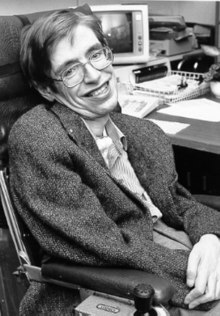

Eric imputes that Dirac’s hair was not as good as Einstein’s.


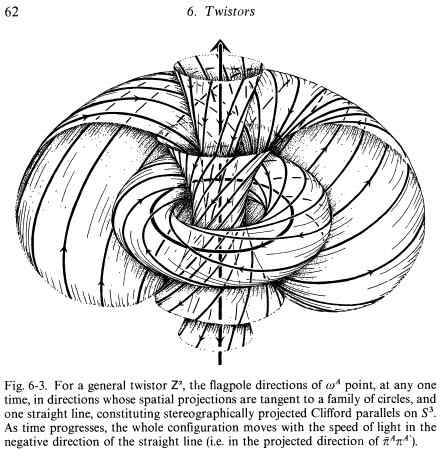
NB:Roger Penrose and Eric Weinstein are friends with the guy who does the commentary for the cage fighting. What a time to be alive. Joe Rogan Experience
![]()
The Hopf Fibration is the only non-trivial principal bundle that can be visually seen

The “Hopf fibration”, or the “Clifford Parallels” was instrumental in the subject of Twistor Theory.
There’s also this diagram, which I found at a blog here: http://arkadiusz-jadczyk.eu/blog/tag/penrose/

And there’s this diagram, which I found at this link ( http://users.ox.ac.uk/~tweb/00001/ ) which is an HTML presentation of “On the Origins of Twistor Theory” - Roger Penrose, 1987

Spinors (Wikipedia)
An introduction to spinors by Andrew M Steane (pdf)
Spinors for Beginners by Eigenchris (YouTube course)
quantum mechanics and the first course
Dirac gave a course (2 courses) of lectures on Quantum Mechanics
Course 1 - Basic Quantum Mechanics
Course 2 - Quantum Field Theory but also Spinors

In the second course (when Penrose took the course) Dirac deviated from his normal course of lectures to give two or three lectures on Two Component Spinors. (Spinors)

General phenomenon of Waves
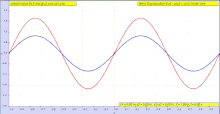
Denis recommended to Roger a book by Corson (presumably this one: Introduction to Tensors, Spinors, and Relativistic Wave-Equations, 1953 by E.M. Corson *


Other people said that Dirac’s course was just like his book but Roger hadn’t read the book.
(I assume this one? Dirac - Principles of Quantum Mechanics)
Mention of Mathematicians:
- Wilhelm Killing
- “Lee”? - this Lee https://en.wikipedia.org/wiki/John_M._Lee was in Differential Geometry but was born in 1950. Maybe his father?
- Élie Cartan
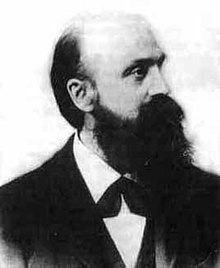
Wilhelm Killing

Elie Cartan
Sir Roger Penrose’s favourite film is 2001: A Space Odyssey

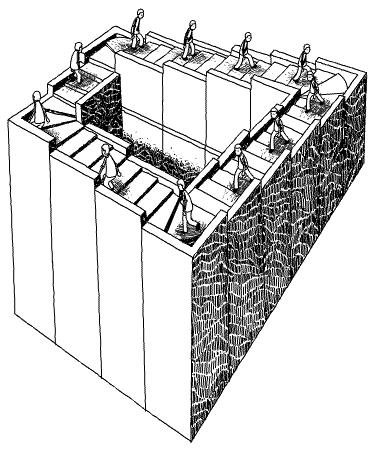
%%%%%%%
Algebraic Geometry of Computing
Finite state machines appear in a variety of instantiations: mechanical, electronic, fluidic. The physical mechanisms involved necessitate that the design is described by differential equations, but ultimately the manipulation of abstracted "logical" states is the final goal. Thus we can describe the architecture of a general finite state machine with [math]\displaystyle{ \mathbb{Z}/2\mathbb{Z} }[/math] algebra (or other finite rings too).
Gates
Typically you will see a logic gate defined by its values on all combinations of inputs as a "truth table":
| x | y | x AND y = AND(x,y) |
|---|---|---|
| 0 | 0 | 0 |
| 0 | 1 | 0 |
| 1 | 0 | 0 |
| 1 | 1 | 1 |
And statements written with logical connectives: [math]\displaystyle{ (x\and y)\or z = OR(AND(x,y),z) }[/math]
Along with distributive laws: [math]\displaystyle{ (x\and y)\or z = (x\or z)\and(y\or z) }[/math], [math]\displaystyle{ (x\or y)\and z = (x\and z)\or(y\and z) }[/math]
De Morgan's laws: [math]\displaystyle{ \neg(x\and y) = (\neg x)\or (\neg y) }[/math], [math]\displaystyle{ \neg(x\or y) = (\neg x)\and (\neg y) }[/math]
All of which apply to more complicated sentences rather than just individual variables. These laws along with commutative and associative laws are sufficient to evaluate and simplify any general logical expression, however we contend that this is the wrong language for computing and makes other important aspects - the dynamics and algebra - obscure.
There is one thing we can extract from logical connectives before moving on. The disjunctive normal form allows us to read truth tables and directly translate them into connective formulae which we can use later. Let us look at a different example which will help us escape the artificiality of AND and OR.
| x | y | XOR(x,y) |
|---|---|---|
| 0 | 0 | 0 |
| 0 | 1 | 1 |
| 1 | 0 | 1 |
| 1 | 1 | 0 |
XOR is only "true" or 1 when x or y but not both, are 1. Disjunctive normal form says that we can view the x, y entries as unary operators which return the input with no change, combine these as given on the lines which evaluate to 1, and take the OR of all of them for the total connective form of the truth table. Here is the third line: [math]\displaystyle{ x\and\neg y }[/math].
The total is:
[math]\displaystyle{
\begin{align*}
&(x\and\neg y)\or (\neg x\and y) \\
=&(x\or(\neg x\and y))\and(\neg y\or(\neg x\and y)) \\
=&(x\or\neg x)\and (x\or y)\and(\neg y\or\neg x)\and(\neg y\or y) \\
=&(x\or y)\and (\neg y\or\neg x) \\
=&(x\or y)\and\neg (y\and x)
\end{align*}
}[/math]
This process can be viewed as a sum of "elementary functions" which are only 1 on one line each, and building a general function/table.
Read prototype
Our point of view is that the texts typically used in physics and especially mathematics degree tracks are window dressing for the real job of being a mathematical physicist or even an engineer. Excellent texts meet a certain standard we set here; Texts should be concise to respect the reader's time and occupations, interdisciplinary, at least relating mathematical tools between areas of mathematics:
- Lang's algebra text contains examples and applications in geometry and number theory throughout
- Vaisman emphasizes the typically algebro-geometric method of sheaves in a differential geometry setting and to develop the theory of multiple sorts of manifolds
- We choose physics texts which connect to heavy mathematical machinery such as curvature and covariant derivatives in general relativity or symplectic/variational geometry in mechanics
- The algebraic topology texts are not "pure" either - focusing on applications to differential or algebraic geometry, and many more.
Thus, the structure of this book list will be centered around core topics in theoretical physics which are already given direct connection to technology and reality, and the mathematics that follows from the theory rather than simply chasing popular formalisms. Future iterations will make an effort to connect with more computational content, such as that seen in representation theory or Olver's text on applications of Lie groups. This pertains to our last criterion that there should be some elementary aspects in a text - showing the translation of the abstract machinery into basic computations to make the relationships with other areas even more transparent.
Also see this list of video lectures, the lectures by Schuller concisely summarize various algebraic and geometric constructions commonly appearing in theoretical physics.
A related set of texts to this one, working with the same basics has been produced leading all the way up and through gauge field theory, quantum mechanics, algebraic geometry, and quantum field theory here.
List Structure
Calculus is not in the pictured starter pack because it is found more often in high school curricula, while linear algebra (despite being core to "applied mathematics" topics such as engineering, numerical computing, and statistics) is often missing at the required level of rigor. Thus, we suggest looking at any Basic Mathematics to quickly fill in your gaps and as a source of quick and dirty computational techniques used universally.
The texts by Landau are the list's core. While on that track, you should start dipping into the texts listed under the Landau volumes to enhance your perspective on repeated readings
The General Mathematics section covers the knowledge that would be acquired in standard (but basic) graduate courses on the different areas of mathematics that later develop into modern topics, and should be developed alongside Landau.
The Aspirational section contains some of the big ideas, which may be repeated from earlier but deserve emphasis. These are the triumphs of mathematics, peaks that everyone deserves to climb.
Basic Mathematics
Landau
Mechanics
The Classical Theory of Fields
Quantum Mechanics
Sets for Mathematics
Categorical approach to set theory by F. William Lawvere.
Backbone reference:
Tensor Analysis on Manifolds
Tensor analysis by Richard Bishop and Samuel Goldberg.
Prerequisite:
Backbone reference:
Lectures on Differential Geometry
Differential geometry by Shlomo Sternberg.
Prerequisite:
Backbone reference:
Cohomology & Differential Forms
Cohomology and differential forms by Isu Vaisman. Sheaf theoretic description of the cohomology of real, complex, and foliated manifolds.
Backbone reference:
Backbone
Topology: A Categorical Approach
Topology by Tai-Danae Bradley, Tyler Bryson, Josn Terrilla. Click here for the Open Access version.
Applications of Lie Groups to Differential Equations
Applications of Lie Groups to Differential Equations by Peter Olver.

